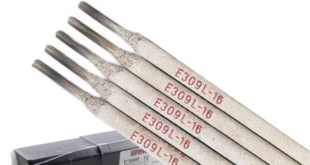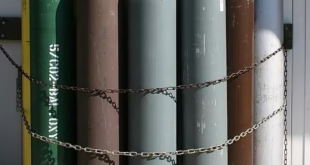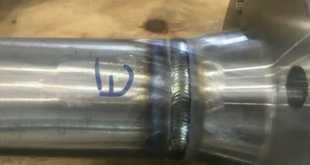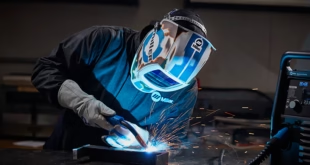Introduction to ASME B16.25 – Buttwelding End Standards
In the world of industrial welding, maintaining uniformity, precision, and safety is crucial. ASME B16.25 is one such standard that governs the preparation of buttwelding ends on piping components. But what exactly does this standard cover, and why is it important? Let’s dive deep into ASME B16.25 and understand its significance in the welding industry.
What is ASME B16.25?
Definition and Scope of ASME B16.25
ASME B16.25 provides detailed guidelines for the preparation of buttwelding ends on components such as elbows, tees, reducers, and caps. It outlines the design, dimensions, and tolerances required to ensure a proper weld joint. The primary objective of this standard is to create a seamless and strong connection between piping components by defining precise welding end preparations.

Industries That Follow ASME B16.25
Industries dealing with high-pressure and high-temperature applications rely heavily on ASME B16.25. This includes:
- Oil & Gas Refineries: Ensuring leak-proof and high-strength pipeline joints.
- Power Plants: Essential for steam and high-temperature applications.
- Petrochemical Industries: Used in transporting hazardous fluids.
- Shipbuilding: Provides structural integrity in marine applications.
- Heavy Machinery Manufacturing: Guarantees durable welded joints for equipment and infrastructure.
Key Features of ASME B16.25
Weld Bevel Preparation
The standard specifies the bevel angles and groove dimensions required for a strong weld joint. This preparation ensures full penetration welding, which is crucial for high-pressure applications.
Land and Root Face Dimensions
It ensures uniform root openings and land dimensions, which are critical for achieving full penetration welds. A properly prepared root face ensures better fusion between welded components.
Tolerances and Alignment Requirements
Strict tolerances are defined to ensure proper alignment, reducing defects like misalignment and incomplete fusion. Proper alignment reduces stress concentrations and enhances the mechanical properties of the welded joint.
Applications of Buttwelding End Standards
Common Industrial Applications
Buttwelding end standards are essential in high-stress environments where leak-proof and strong joints are required. These applications include:
- Pipelines carrying high-pressure steam, gas, or liquids.
- Structural frameworks requiring high-strength welding connections.
- Pressure vessels and heat exchangers that must endure extreme operating conditions.
Benefits of Standardized Welding Ends
- Ensures uniformity in fabrication: Reduces variability in welding procedures.
- Reduces welding defects: Ensures proper fit-up and fusion.
- Enhances the mechanical strength of the joint: Increases durability and reliability.
- Improves operational safety: Reduces the risk of failures in critical piping systems.
Buttwelding Ends Defined in ASME B16.25
Plain Beveled Ends
A single-angle bevel commonly used for standard pipe welding applications. It provides a simple yet effective weld preparation for achieving strong connections.
Compound Beveled Ends
Includes multiple bevel angles to facilitate deeper weld penetration, commonly used for thick-walled pipes. This type of bevel reduces the risk of incomplete fusion and improves joint strength.
Special Welding End Preparations
Customized end preparations for specialized applications, often used in unique welding environments. These include J-prep and U-prep bevels for specific high-strength applications.
Welding and Inspection Requirements
Pre-Weld Preparation
Proper cleaning, edge preparation, and material inspection ensure defect-free welding. Removing contaminants such as oil, rust, and dirt is critical for a successful weld.
Welding Process Guidelines
Following ASME Section IX welding procedures ensures compliance with required parameters. This includes:
- Proper selection of welding electrodes or filler materials.
- Using approved welding techniques such as GTAW, SMAW, or GMAW.
- Ensuring adequate preheat and post-weld heat treatment where necessary.
Post-Weld Inspection Requirements
Non-Destructive Testing (NDT) techniques like radiographic and ultrasonic testing help verify weld integrity. These methods ensure there are no defects such as cracks, porosity, or lack of fusion.
ASME B16.25 vs. Other Welding Standards
Comparison with ASME B16.9 and B16.5
- ASME B16.9: Governs factory-made buttweld fittings.
- ASME B16.5: Covers pipe flanges and flanged fittings.
- ASME B16.25: Focuses specifically on buttwelding end preparation.
How ASME B16.25 Complements Other Standards
ASME B16.25 works alongside other ASME codes to ensure seamless fabrication and installation of piping systems. It provides the necessary details to ensure proper end preparation before welding, ensuring compatibility with ASME B16.9 fittings and ASME B16.5 flanges.
Compliance and Certification
How to Ensure Compliance?
- Use ASME-approved materials.
- Follow specified dimensions and tolerances.
- Conduct thorough inspections and testing to verify weld quality.
Role of Third-Party Certification
Third-party inspectors verify compliance with ASME B16.25, ensuring industry-wide standardization. These inspections guarantee that welding procedures and end preparations meet the required specifications.
Challenges and Best Practices
Common Challenges in Buttwelding
- Improper beveling leading to weak joints.
- Misalignment causing weld defects.
- Lack of proper inspection resulting in failures.
Best Practices to Follow
- Always adhere to ASME guidelines.
- Use precision machining for bevel preparation.
- Implement thorough inspection and testing procedures.
FAQs
Why is ASME B16.25 important in welding?
ASME B16.25 ensures uniformity in buttwelding end preparation, reducing defects and improving weld integrity.
What materials does ASME B16.25 cover?
It applies to various materials, including carbon steel, stainless steel, and alloy pipes used in high-pressure applications.
How do I ensure my weld preparation meets ASME B16.25?
By following ASME-specified bevel angles, tolerances, and conducting proper inspections before welding.
What are the key tolerances in ASME B16.25?
Tolerances include precise bevel angles, root face dimensions, and alignment criteria to ensure strong weld joints.
How does ASME B16.25 affect welding cost and efficiency?
Standardized buttwelding ends reduce rework, minimize defects, and improve welding efficiency, leading to cost savings.
Conclusion
ASME B16.25 is a critical standard in the welding industry, ensuring the proper preparation of buttwelding ends for secure and reliable joints. By adhering to this standard, industries can enhance safety, reduce defects, and improve overall welding efficiency. Following ASME B16.25 guarantees consistency and compliance, making it an indispensable part of the welding process.
 Welding of Welders All about Welding and Welders
Welding of Welders All about Welding and Welders



